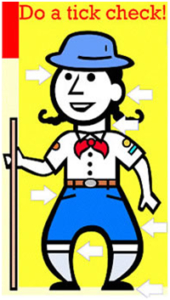Welcome to the Bowman School Nurse Website!
Revised by Raeanne Brazee, RN 11/14/18
Guidelines for the Dismissal of Children from School by the School Nurse
The following conditions should be considered reason for dismissal from school by the school nurse:
- Temperature of 100 F degrees or greater
- Vomiting or diarrhea
- A rash suspicious of infectious disease
- Suspected conjunctivitis based on nursing assessment
- A positive strep culture that has not been under treatment with antibiotics for 24 hours
- Inability of a child to move safely about in school due to an injury that has not had medical evaluation and intervention
- A symptomatic child known to be a direct contact of a positive pertussis case, for five days from initiation of antibiotics
- An injury, illness, or condition that requires, in the school nurse’s judgment, further management by a parent/guardian or primary care provider
- For confirmed Fifth’s Disease: No exclusion necessary, but staff notification is recommended.
PLEASE NOTE: When a student has been absent for 5 or more consecutive days, a doctor’s note must be obtained and submitted to school.
When to contact the school nurse
Please help the school nurse care for your child by informing the nurse if your child has:
- any chronic or acute illnesses
- a new medication or change in medication dosage
- been exposed to a communicable disease such as a strep throat infection, chicken pox, or conjunctivitis
- a life-threatening or new allergy
- a serious injury requiring hospitalization, or a diagnosed head concussion
- an injury requiring casting, sutures, a splint, or mobility assistance of crutches or wheelchair
- vision or hearing difficulties
- when contact information (phone, email) changes so that your child’s school record is updated in the event that the nurse needs to reach you
- if there is an event at home or in the family that may impact your child at school such as military deployment, birth, or death of a family member or of a beloved pet.
WATCH OUT FOR TICKS!

Ticks are most likely found in shady, damp, brushy, wooded, or grassy areas (especially in tall grass), including your own backyard. They feed on the blood of mammals (including people, dogs, cats, deer, and mice), birds, and reptiles (snakes and turtles, for example). Ticks can bite you and spread diseases including Lyme disease, babesiosis, anaplasmosis (formerly human granulocytic ehrlichiosis or HGE), tularemia, and Rocky Mountain spotted fever. They do not fly or jump. They attach to animals or people that come into direct contact with them. Ticks are most active during warmer months (April-September).
WHAT CAN YOU DO TO PROTECT YOUR CHILD?
- Avoid Direct Contact with Ticks
- Avoid wooded and bushy areas with high grass and leaf litter.
- Walk in the center of trails.
- Check for ticks daily under the arms, in and around the ears, back of the neck, inside the belly button, behind the knees, between the legs, between the toes, around the waist, and especially in their hair. Examine gear and pets. Ticks can ride into the home on clothing and pets, then attach to a person later, so carefully examine pets, coats, and day packs.

HOW TO REMOVE A TICK
- Use fine-tipped tweezers to grasp the tick as close to the skin’s surface as possible.
- Pull upward with steady, even pressure. Don’t twist or jerk the tick; this can cause the mouth-parts to break off and remain in the skin.
- After removing the tick, thoroughly clean the bite area with soap and water.
- Dispose of a live tick by submersing it in alcohol, placing it in a sealed bag/container, wrapping it tightly in tape, or flushing it down the toilet. Never crush a tick with your fingers.
Avoid folklore remedies such as “painting” the tick with nail polish or petroleum jelly, or using heat to make the tick detach from the skin. Your goal is to remove the tick as quickly as possible–not waiting for it to detach.


Source: Massachusetts Department of Public Health and Centers for Disease Control and Prevention
For further information, please visit:
- http://www.mass.gov/eohhs/gov/departments/dph/programs/id/epidemiology/ticks/public-health-cdc-tickborne-educational-info.html
- http://www.cdc.gov/ticks/
Head Lice

It is recommended that parents check their children’s hair weekly (take-a peek, once-a-week) for any evidence of pediculosis. The district protocol for the management of pediculosis can be viewed by clicking Head Lice Protocol
If head lice is discovered, parents should:
- Treat the infestation in accordance with the recommendation of their child’s pediatrician and remove as many nits as possible before returning to school.
- Notify close contacts- family and friends so that they can check their children’s heads.
- Notify the school nurse, who will offer guidance and support to families while maintaining confidentiality.
- Continue to comb, inspect their child’s head, and manually remove nits daily.
Who is at risk for getting head lice?
Head lice are found worldwide. In the United States, infestation with head lice is most common among pre-school children attending child care, elementary schoolchildren, and the household members of infested children. Although reliable data on how many people in the United States get head lice each year are not available, an estimated 6 million to 12 million infestations occur each year in the United States among children 3 to 11 years of age. In the United States, infestation with head lice is much less common among African-Americans than among persons of other races, possibly because the claws of the of the head louse found most frequently in the United States are better adapted for grasping the shape and width of the hair shaft of other races.
Head lice move by crawling; they cannot hop or fly. Head lice are spread by direct contact with the hair of an infested person. Anyone who comes in head-to-head contact with someone who already has head lice is at greatest risk. Spread by contact with clothing (such as hats, scarves, coats) or other personal items (such as combs, brushes, or towels) used by an infested person is uncommon. Personal hygiene or cleanliness in the home or school has nothing to do with getting head lice.
Reference: CDC (Centers for Disease Control and Prevention)
For further information, please visit:
A few reminders for your child’s health and safety at school:
Life Threatening Allergies and Asthma Care Plans: The Anaphylaxis Emergency Action Plan and Asthma Health Care Plan must be provided at the beginning of each school year. Please include the prescribed medication(s) with completed forms. Click here to download the form the LPS website.
Medications: ALL medications given during the school day require a signed medication consent form provided by your child’s health care provider. This includes daily medication and “as needed “medication including epinephrine (such as EpiPen), inhalers (such as Albuterol), short term antibiotics, and over-the-counter medications (such as acetaminophen and ibuprofen). Some medications must be brought to school by a parent/guardian.
A new medication order for the current school year is required. The order must be written by a prescriber, signed by a parent/guardian and delivered with a supply of the medication, in its original labeled container, to the health office.
The Medication Permission form may be downloaded from the LPS website, or picked up in the health office.
Sunscreen/Insect repellents: Parents are responsible for applying sun screen and/or insect repellent on elementary school children. Staff are not permitted to apply sun screen and/or insect repellent on children. In middle school and high school students manage their own sun screen/insect repellent. Exceptions are made for students with a medical diagnosis that requires application before outdoor activity. A physician’s order with parent permission must be on file for the school nurse to apply the product.
Physical Activity Restrictions: A child must provide a note from his/her health care provider for exclusion from physical education and/or outdoor recess.
An important note about safety at recess…
Students have two recesses during the day on typical full days of school. In inclement weather (raining, or below 18 degrees Fahrenheit, including wind chill), recess is held indoors in the classrooms. Outdoor recess is held whenever possible. It is important that children are dressed appropriately including a coat, hat, mittens or gloves, boots, snow pants) during the winter season. Thank you for your cooperation in keeping your child safe and warm!
Please consider placing a change of weather-appropriate clothes for your child to keep in his/her locker. I have a limited supply of clothing items that have been kindly donated by parents to offer students who need a change of clothes during the school day. If you have clean, gently used clothing (especially socks and sweat pants), I would greatly appreciate those items to add to my inventory. If your child brings these donated clothes home, please launder them and return them to me. Thank you in advance for your assistance and generosity!
For further information about Lexington Public School Health Services, please visit: https://lps.lexingtonma.org/Page/1481
Please feel free to contact me with any student health concerns or questions.
Jean Claffey MEd, BSN, RN, NCSN
School Nurse
Bowman Elementary School
Email: jclaffey@lexingtonma.org
Phone: 781-861-2500, ext. 2
Confidential Fax: 781-861-2304


